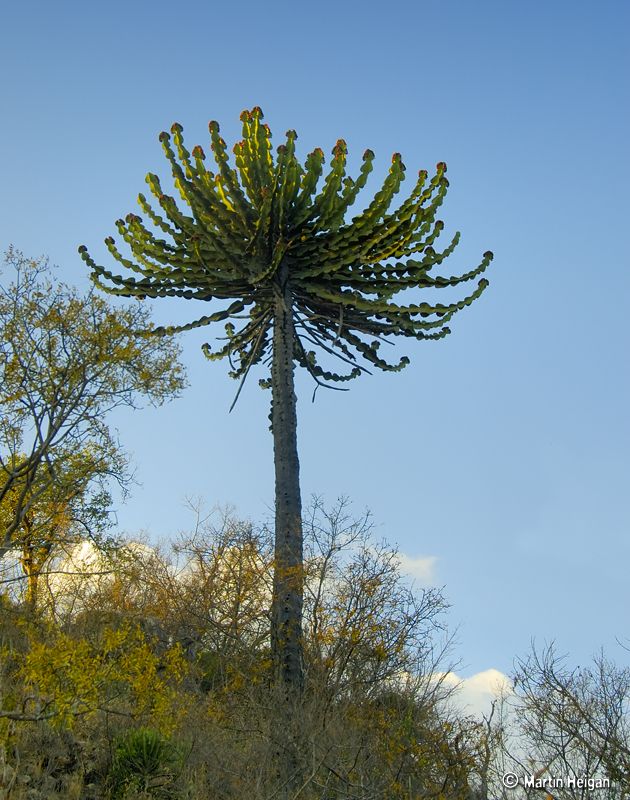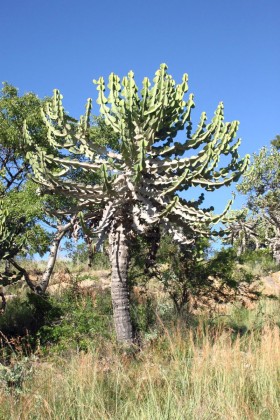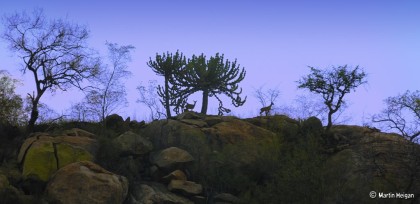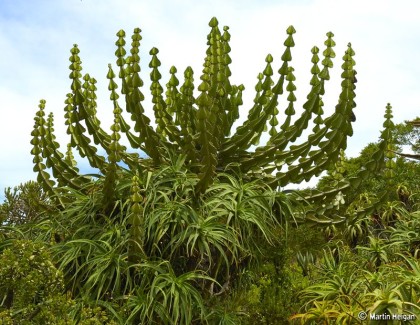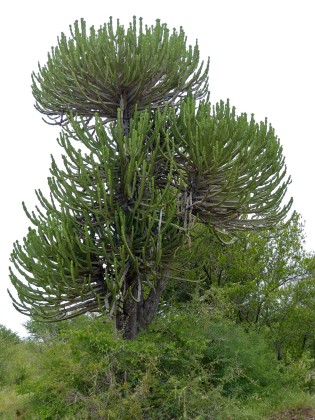(Photograph = Euphorbia confinalis, Martin Heigan)
Introduction
Some plant genera, though having many species, are composed of plants all of the same general shape. For instance, all daylilies (Hemerocallis) are plants with grass-like or sword-like leaves and lily-like flowers. But, some plant genera have enormous variety.
The Details
Euphorbia plants come in all shapes and sizes. Some are small annuals less than 1-inch tall. They may may be perennials that grow back each year and survive extreme winters. They may be deciduous or evergreen. They often have thorns, but often do not. Many have underground storage stems, but many do not. Euphorbias can grow like columnar cacti or small ball-shaped cacti. Some form shrubs, but some euphorbias create trees reaching 20-ft tall.
In South Africa there are multiple tree euphorbias including E. ingens, E. tirucalli, and E. cooperi. E. cooperi is the most commonly encountered tree euphorbia in South Africa, and it is common in gardens. E. cooperi grows well in flower pots or even outdoors in nearly frost-free areas.
E. cooperi creates a single trunk. Branches spread out higher up the stem and curve upwards so that the tree looks a bit like a Menorah. The branches have wings (edges) with spines, and they resemble columnar cacti in a distant way.
Related Reading: Tree Euphorbias of South Africa
